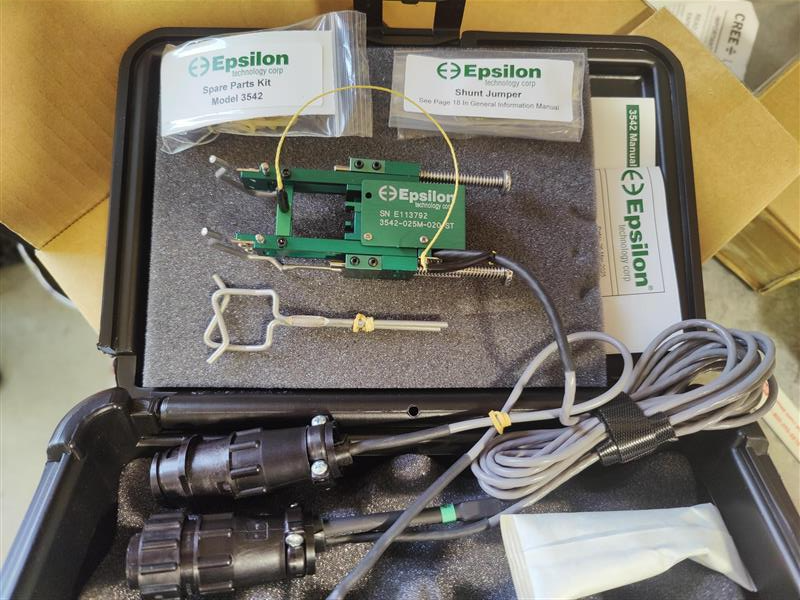Metal Testing Equipment
Standards
ASTM E4, ISO 6892, ASTM D790, ASTM D638, ISO 37, ISO 1184, ISO 604, ISO 178, ISO 527, ISO 7500-1, ISO 2439, ISO 7500, ASTM E8, ASTM D412






Description
The EML class B Series electromechanical universal testing machine 10N - 20kN (2.24 - 4496.18 lbf) addresses the needs of standardized and routine testing, providing the user high quality at the most affordable price. The dual column Class B testing systems are suited for tension, compression, flexure, and other testing applications where load range requirements are between 10N to 20kN. They are typically used for quality control and production testing in the plastics and rubber industries.
Force Capacity: 10N (2.24 lbf), 20N (4.49 lbf), 50N (11.24 lbf), 100N (22.48 lbf), 200N (44.96 lbf), 500N (112.40 lbf), 1kN (224.80 lbf), 2kN (449.61 lbf) , 5kN (1124.04 lbf), 10kN (2248.08 lbf), 20kN (4496.18 lbf)
Load Frame Configuration: Dual-column, bench-top electromechanical frame with servo direct-drive transmission
Test Space: Single-zone vertical layout with reinforced guidance columns for precise displacement control
Typical Specimens
Designed for high-precision testing of modern materials, the NG-EML Dual Column Bench Top system supports a wide variety of specimen types, including:
- Rubber, elastomers, and flexible polymer films (ASTM D412, ISO 37, ISO 1184)
- Engineering plastics and reinforced composites (ASTM D638, ISO 527, ISO 604)
- Thin metal sheets, soft metals, and wire (ASTM E8, ISO 6892-1, GB/T 228)
- High-strength alloys and prepregs (ASTM E21, ISO 7500)
- Flexible electronic substrates and small components
- Adhesives, foam, paper-based and wood products (ASTM D790, ISO 178)
- Textiles, biomaterials, and consumer goods
Electromechanical Universal Testing Machine (10N-20kN) Features
- Dual-column electromechanical bench-top configuration
Designed for high precision and stability, optimized for both standard and advanced materials testing. - FEM-optimized crosshead and frame structure
Rigid guidance columns with self-lubrication and preload assembly ensure high stiffness and accurate axial alignment throughout the test stroke. - Direct-drive servo system with synchronous belt transmission
Offers high speed (up to 2400 mm/min), fast return, low vibration, and maintenance-free operation. Enhances energy efficiency and minimizes backlash. - Pre-loaded precision ball screws
Improve force transmission consistency and reduce mechanical clearance, maintaining accuracy under cyclic loading. - Photoelectrical encoder-based position measurement
Integrated into the servo motor system, enabling 0.011 µm position resolution and smooth speed transitions, including high-temperature strain rate testing as low as 0.00007 s⁻¹. - Closed-loop control with 1200 Hz frequency
Digital 24-bit acquisition with high-speed 6-channel AD conversion and up to 4 MHz pulse signal input. Ensures precise control of force, displacement, and strain in real time. - Built-in overload and collision protection
Includes automatic stop on force spike detection, 103% overload protection, mechanical limit switches, and programmable safety logic to protect the load cell and specimen. - GenTest™ Software
Intuitive interface with preloaded test methods (ASTM, ISO, GB/T, EN), real-time graphing, quick test setup, recalculation, voice prompts, and multi-language switching. - Flexible accessory integration
Supports connection with extensometers, temperature chambers, pneumatic controllers, and other devices. Features TEDS recognition and dual communication modes (PC/software and controller). - Handset with 3.5” color touchscreen
Allows direct crosshead control, test initiation, grip actuation, and fine-tuning for sensitive adjustments. Features magnetic base and ergonomic wheel. - Optional modular components
Include ergonomic workbench (793×658×675 mm), full-protection safety shield with interlock logic, touchscreen PC, and pneumatic grip control unit with integrated pressure regulation.
Control System
The NG-EML system incorporates a high-performance digital control unit designed for precise test execution, seamless communication, and enhanced system integration.
- Alternative Connectivity – Ethernet (TCP/IP)
In addition to USB, the controller supports Ethernet-based communication using a dedicated high-speed logic chip with full TCP/IP protocol stack support. This allows for high-throughput, low-latency data transmission in distributed testing environments or where remote control and network integration are required. - Sampling and Acquisition Performance
The control system offers 1200 Hz closed-loop sampling, enabling precise synchronization of force, displacement, and extensometer inputs. Six-channel analog acquisition with 24-bit resolution allows highly accurate signal capture for real-time feedback and test control. - Integrated Hardware Protection
Embedded firmware ensures autonomous monitoring of voltage, current, overload, motor temperature, and crosshead limits. Emergency stop logic is implemented both in software and hardware layers. - Handheld Remote Console (Standard)
Includes a 3.5-inch full-color touch screen, ergonomic silicone keypad, and fine-adjustment rotary dial. Features include test start/stop, grip control, crosshead positioning, return-to-origin function, and overload prevention. It can operate in dual mode—connected directly to the controller or through the PC interface—offering full control redundancy for lab flexibility.
Optimized Structural Rigidity
NG-EML Dual Column Bench Top – Universal Testing Machine features a frame engineered for superior mechanical stiffness and durability. Utilizing a high-rigidity dual-rail structure and an FEA-optimized crosshead design, the system minimizes deflection and backlash, ensuring exceptional accuracy during critical measurements such as modulus determination, yield strength, and failure loads.
- The testing frame integrates preloaded precision ball screws, dual linear motion guide rails, and reinforced column supports to significantly reduce mechanical play.
- All interfaces — load cell, ball screw, motor couplings, and crosshead contact points — are engineered for zero-clearance under load, enhancing measurement consistency in both static and dynamic tests.
- The rigid design ensures long-term alignment stability, even during high-cycle or repetitive test applications.
High-Speed, Direct-Drive Actuation
The NG-EML Dual Column Bench Top – Universal Testing Machine is equipped with a next-generation direct-drive servo transmission system that delivers exceptional speed, acceleration, and responsiveness.
- The system eliminates traditional gear reducers by employing a high-rigidity synchronous belt and servo motor assembly, which significantly improves mechanical efficiency and reduces transmission backlash.
- Maximum crosshead movement speed reaches 2400 mm/min, significantly reducing testing cycle durations and increasing throughput.
- High-speed drive enables better responsiveness for low-speed creep, stress relaxation, and modulus ramp tests, while still allowing ultra-slow control for precision measurement scenarios.
- Enhanced acceleration profiles improve system adaptability in multi-stage or high-speed ramp testing procedures.
Intelligent Safety and Control Architecture
The NG-EML Dual Column Bench Top – Universal Testing Machine incorporates an advanced safety and intelligence layer that protects both operator and equipment while optimizing system responsiveness and usability.
- Real-Time Collision Prevention: The system constantly monitors real-time force feedback and movement data. If an abnormal force spike is detected (e.g., specimen fracture or obstruction), crosshead motion is automatically halted to prevent load cell overload or mechanical damage.
- Overload Protection Logic: The system enforces an immediate stop at 103% of rated capacity. This hardware-level safeguard ensures long-term integrity of sensitive components.
- Dual-Layer Position Limit Protection: Built-in software and mechanical end-stop switches ensure safe operation boundaries. Both user-defined digital limits and physical stroke protectors are implemented.
- Emergency Stop Circuitry: Integrated emergency stop buttons allow the operator to immediately interrupt any movement.
- Sensor Range Enforcement: All input channels (force, displacement, extensometer) include range-checking logic to prevent overrange conditions and maintain data validity.
- Handheld Controller Safety: The remote control unit includes grip lockout, overload prevention, and a return-to-origin function that prevents accidental mispositioning.
These features make the system both safe for daily use in production environments and smart enough for complex, precision-driven test workflows.
Streamlined Operation and Maintenance
The NG-EML Dual Column Bench Top – Universal Testing Machine is designed for intuitive use and efficient daily operation, reducing setup time, operator training, and maintenance complexity.
- User-Centered Software Workflow: GenTest software presents a clean, icon-driven interface. Built-in templates for ASTM, ISO, GB/T, and EN standards allow rapid setup, while drag-and-drop test design and real-time graphical outputs simplify routine and advanced testing alike.
- Step-by-Step Configuration: Operators can build test sequences with guided steps, reducing the risk of errors and ensuring repeatability across users and labs.
- Instant Report Generation: One-click data export, automatic calculation of results (modulus, yield, tensile strength, etc.), and batch processing functions streamline documentation and compliance.
- Accessible Maintenance Architecture: The controller module is slide-mounted and accessible for service without disassembling the frame. Protective covers can be quickly opened for belt, motor, or sensor inspection.
- Dual Control Modes: The handheld remote console and optional touch-screen PC interface allow local or PC-based operation with full synchronization, offering flexibility for both training and production use.
These design principles make the NG-EML system simple to operate and maintain, while still offering the flexibility and performance required by demanding testing environments.
Mechanical and Electronic Architecture
The NG-EML Dual Column Bench Top – Universal Testing Machine is engineered with a precision mechanical structure and high-performance control electronics to ensure stability, repeatability, and accuracy across all test scenarios.
Precision Load Frame
- High-Stiffness Linear Guide System: Dual linear guide rails with integrated self-lubrication significantly enhance lateral stiffness and ensure straight, low-friction crosshead travel. This design minimizes off-axis motion and maintains precise axial alignment, which is essential for reducing measurement error in displacement- and strain-sensitive tests.
- Low-Noise Synchronous Belt Drive: The direct-drive system employs a high-performance synchronous belt optimized for high speed and low vibration. It operates maintenance-free and ensures smooth power transmission between the servo motor and the actuator assembly.
- Integrated Optical Encoder: A high-resolution photoelectric encoder is embedded within the servo system to capture real-time position feedback of the crosshead, supporting micro-displacement measurements with 0.0133 μm resolution.
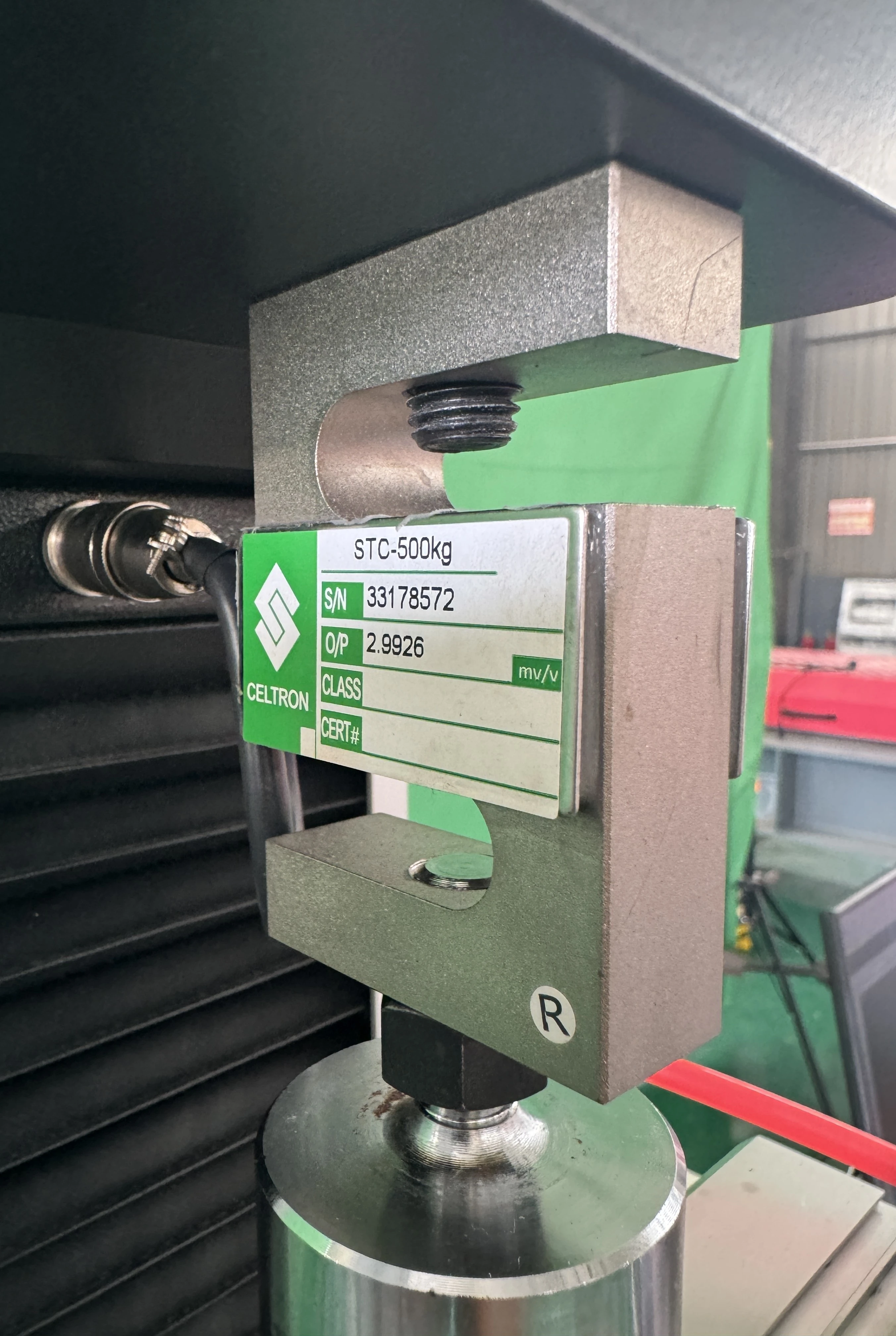
Load Cell Assembly
- High-Precision Load Cells: Each system includes a factory-calibrated load cell with high stiffness, minimal signal drift, and linearity across the entire rated force range.
- Overload and Lateral Force Protection: Built-in safety logic and structural reinforcement protect the sensor against shock loading, side forces, and improper specimen failure.
- Bidirectional Testing: The load cells support both tensile and compression tests without requiring reconfiguration.
- TEDS Auto-Recognition: All load cells are equipped with IEEE 1451.4-compliant TEDS chips, enabling plug-and-play recognition and eliminating manual setup.
- Self-Calibration Ready: The system supports internal load cell verification procedures to maintain measurement accuracy over time.
- Wide Operating Temperature Range: Rated from −55 °C to +90 °C, suitable for standard and environmental chamber-based testing.
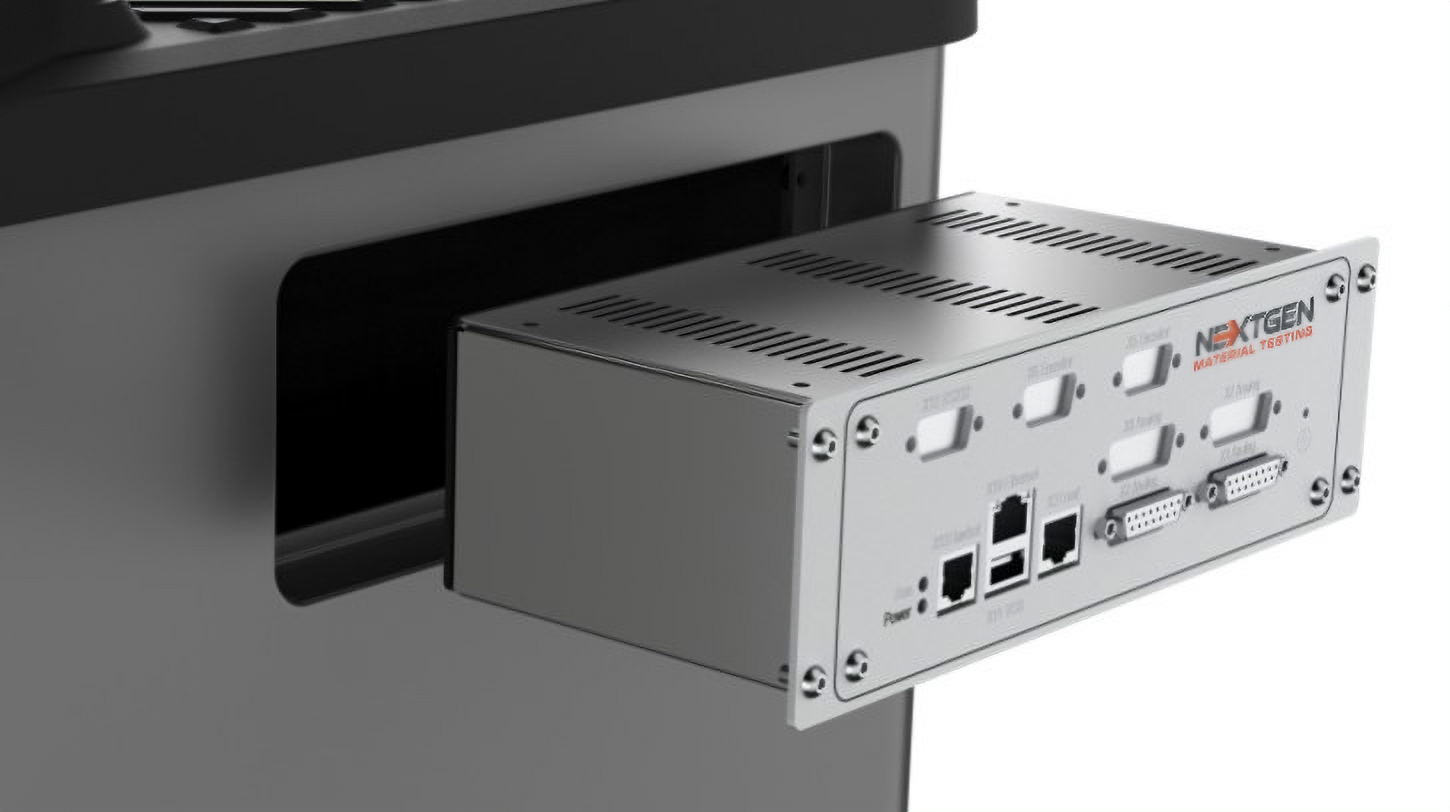
Closed-Loop Controller
- Adaptive Feedback Control: The controller features a next-generation closed-loop PID algorithm, optimized for the upgraded direct-drive mechanics. This enables rapid system response under varying material behavior and loading profiles.
- Smooth Transition Profiles: Intelligent speed ramps and control smoothing algorithms ensure consistent performance across high-speed and low-speed regimes. This is critical for metal testing at both ambient and elevated temperatures.
- Multi-Channel Acquisition: Six synchronized analog channels and multiple digital inputs allow simultaneous integration of extensometers, temperature sensors, strain gauges, and load signals with millisecond-level accuracy.
Live Data Visualization and Graphing
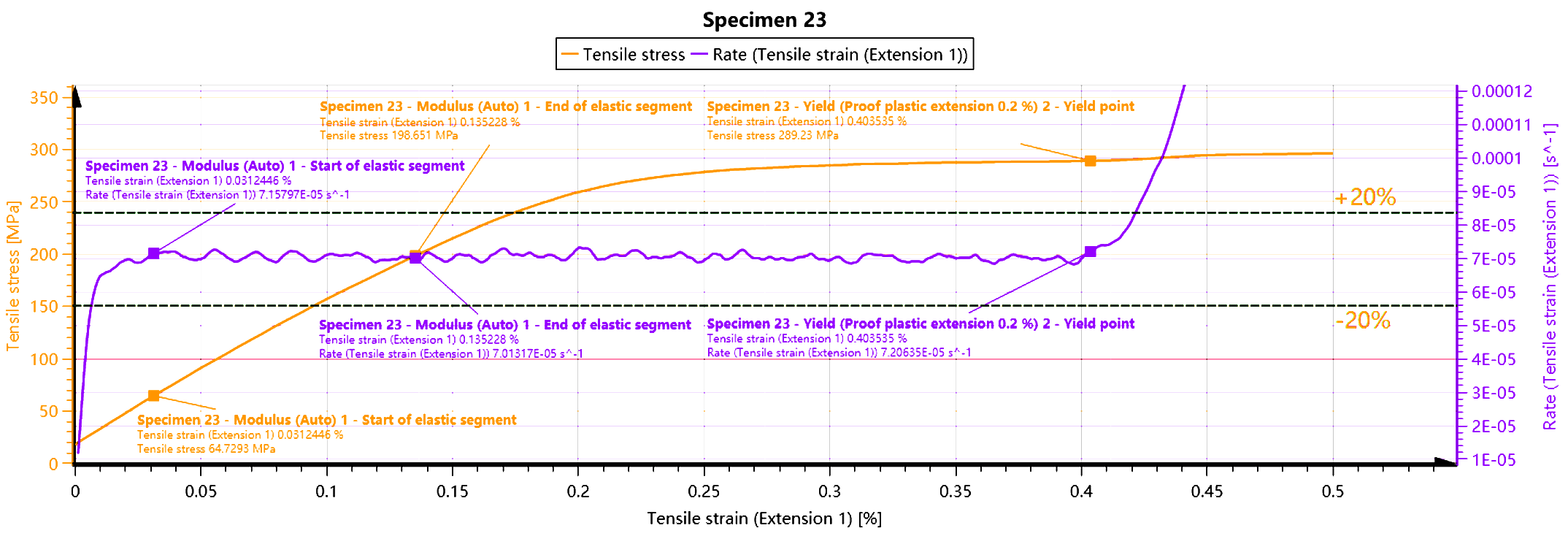

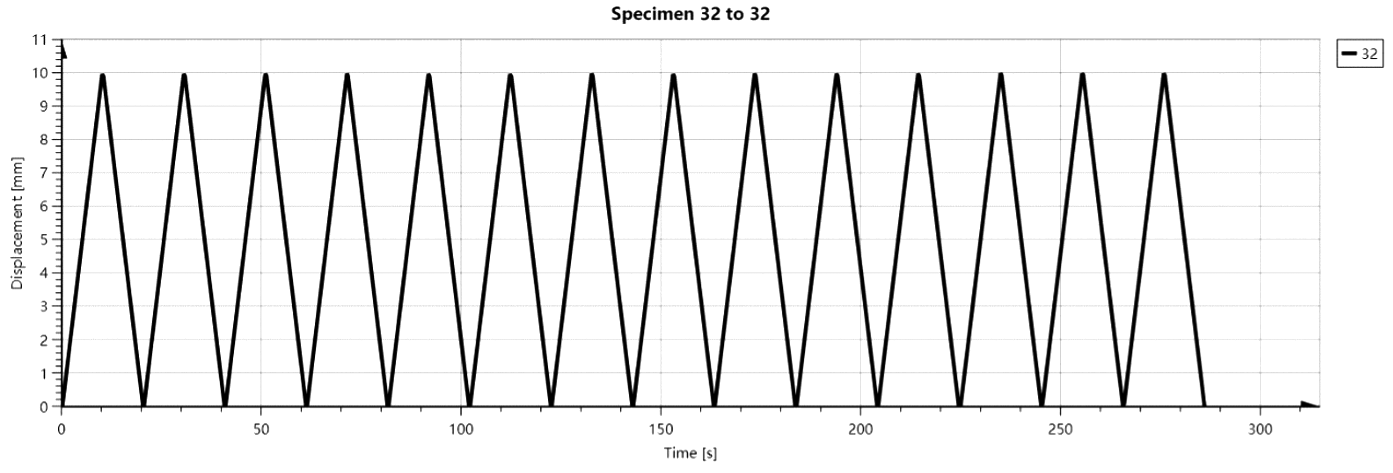
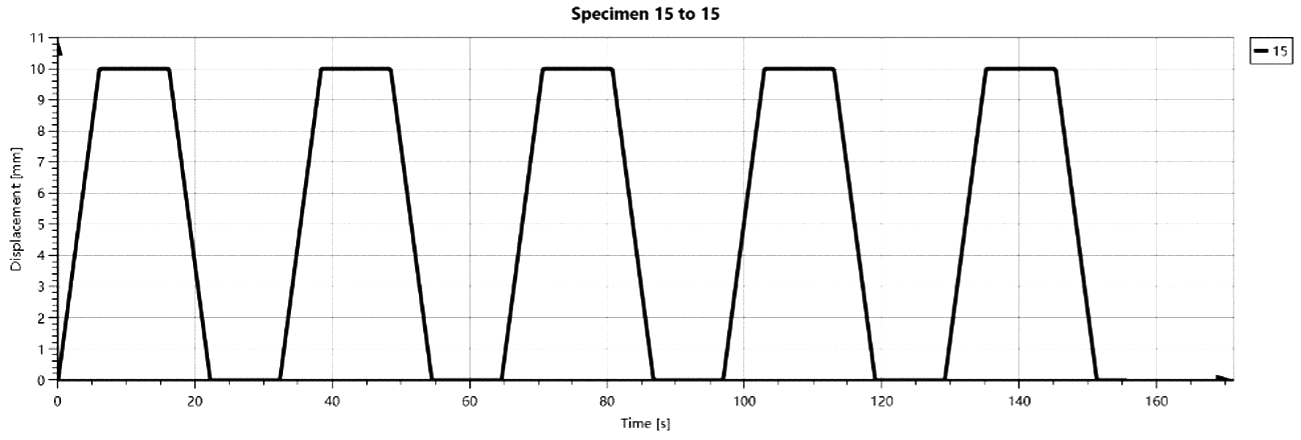

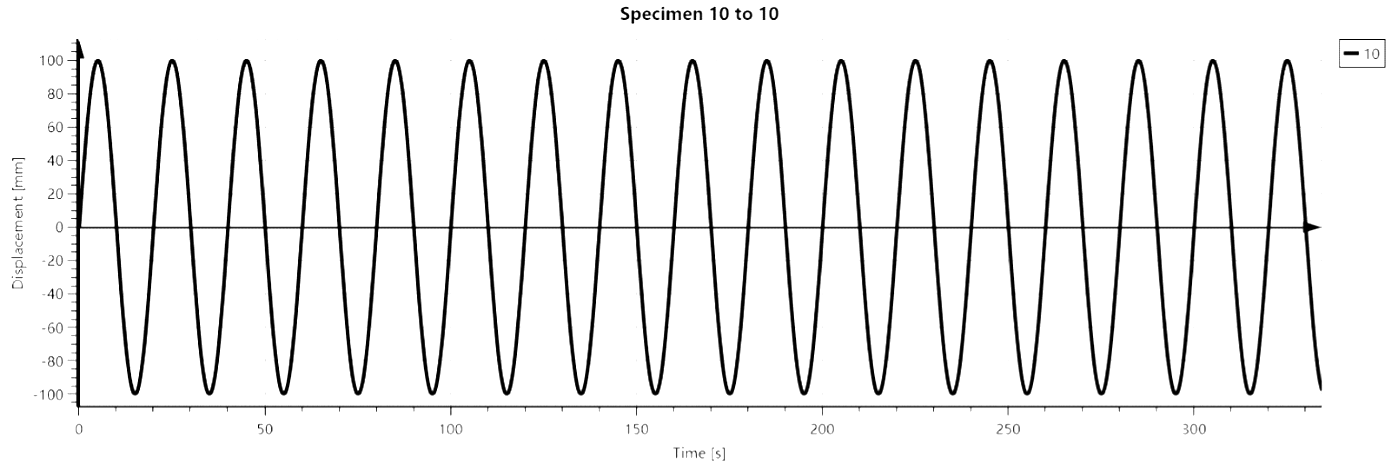
- Real-Time Graphing: During each test, the system displays synchronized force-displacement, stress-strain, and time-based curves in real time. Graphs are updated dynamically with every acquisition cycle (1200 Hz).
- Customizable Chart Layouts: Operators can define custom chart views, zoom windows, axis scaling, and data overlays for advanced comparative analysis.
- Zoom-In Tools: Operators can manually explore key points such as break locations, yield regions, and modulus segments during or after the test using interactive chart controls.
- Multiple Curve Overlays: Batch testing and comparison of multiple sample curves on a single graph allow performance consistency analysis and outlier detection.
- Export Formats: Charts and raw data can be exported in multiple formats including CSV, Excel, PDF, and graphical image (PNG, SVG).
Integrated Control Interfaces
The NG-EML Dual Column Bench Top – Universal Testing Machine is engineered to support multiple control and interaction modes, providing operators with ergonomic, efficient, and flexible access to all machine functions. Whether in production, R&D, or training environments, these interfaces streamline test execution, setup, and safety control.
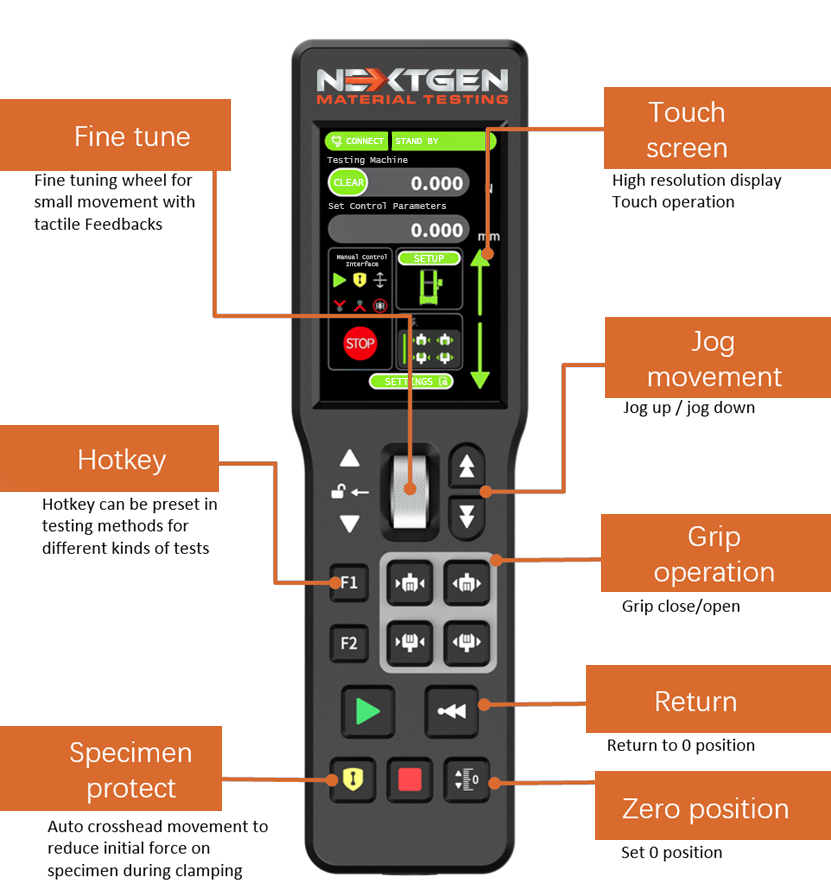
Handheld Remote Controller – Included as Standard
This compact, magnetically mountable remote handset includes a fully integrated 3.5-inch full-color touchscreen display for direct user interaction with test status and parameter control.
- Ergonomic Interface: Features silicone-coated buttons and a fine-resolution rotary wheel, which allows precise manual positioning of the crosshead. Operators can jog the crosshead, issue return-to-origin commands, or fine-tune alignment prior to clamping specimens.
- Real-Time Feedback: Live force, displacement, and system state are displayed on-screen. The user receives continuous updates, reducing the need to shift attention between the handset and PC.
-
Core Control Functions:
- Start / Stop test
- Return to home position
- Manual jog of crosshead (up/down)
- Grip open/close control (if pneumatic system installed)
- Specimen protection logic – prevents excessive preload during setup
-
Flexible Communication Modes: Can function either:
- In direct mode, communicating with the controller via embedded logic
- In PC-synchronized mode, acting as a secondary user input device for software-guided workflows
Its magnetic backplate enables quick placement on the load frame or workstation surface, maintaining accessibility throughout test preparation and operation.

Optional Industrial Touchscreen PC
An optional all-in-one touchscreen computer can be mounted directly on the load frame, enabling standalone test execution without requiring an external desktop or laptop.
- GenTest™ Software Ready: The integrated industrial PC is preloaded with the full version of GenTest™ software. It provides access to all standard test method libraries, custom sequence creation, live graphing, real-time analytics, and report generation tools.
- Intuitive Touch Interface: Multi-touch screen supports tap, drag, pinch-to-zoom, and gesture control. Graphs, test results, and settings are interactively accessible on-screen, minimizing the learning curve for new users.
-
Industrial-Grade Build: The PC unit features:
- Shock-absorbing housing
- Sealed surface for dust and moisture resistance
- Vibration isolation mounts (optional)
- Port Expansion: Offers multiple USB ports for data export, printer connection, barcode scanning, or peripheral automation.
This setup is ideal for laboratory benches with limited space, production lines requiring test autonomy, or educational facilities seeking simplified workstation design.

Optional Workbench
The optional ergonomic workbench is designed to enhance operator convenience during test preparation and execution. It provides a stable surface for instrument handling and organized storage of accessories such as grips and fixtures. With compact dimensions of 793 × 658 × 675 mm (L × D × H), it integrates seamlessly into laboratory environments and supports efficient workflow.
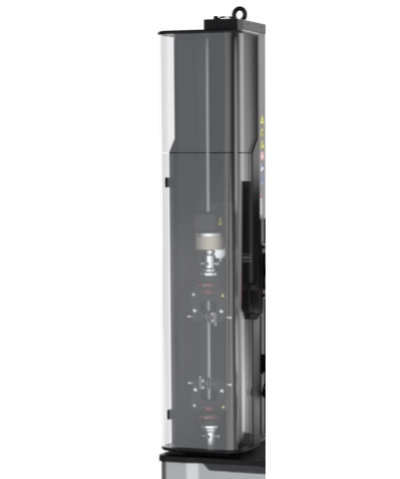
Optional Protection Shield
The optional protection shield features a fully enclosed structural design with an aluminum alloy reinforcement frame and high-impact polycarbonate panels. This safety enclosure is engineered in accordance with international mechanical safety standards to ensure maximum protection during critical testing operations.
Equipped with an integrated door locking mechanism and software-linked interlock system, the shield restricts system movement when the door is open. This design minimizes the risk of injury and enhances occupational safety in high-throughput or high-force test scenarios.
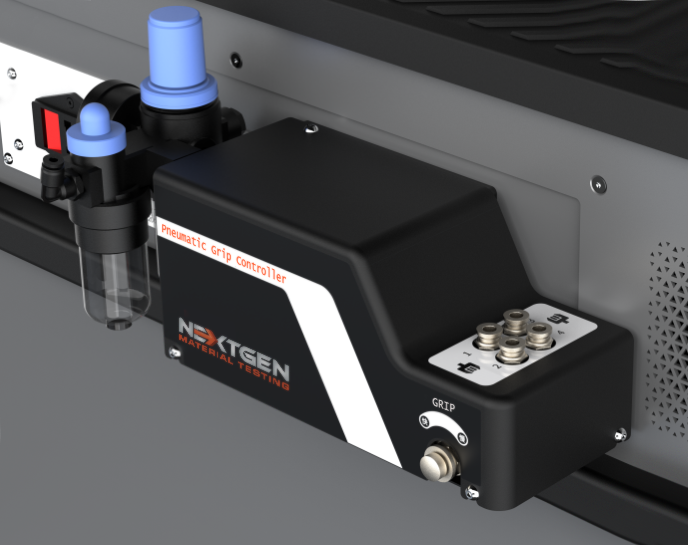
Optional Pneumatic Grip Control Module
For applications requiring pneumatic grips, the system supports an optional digital pneumatic grip pressure control unit, allowing for programmable clamping force and improved specimen protection.
- Pressure Control and Regulation: Users can set and adjust air pressure via a digital interface to match the material’s clamping requirements. Accurate pressure prevents both under-clamping (slippage) and over-clamping (material deformation).
- Dual Gripping Channels: Independently control opening and closing of upper and lower pneumatic grips for high-precision clamping sequences.
-
Integrated Safety Mechanism:
- Grip actuation is disabled unless the test space is clear and the system is in a safe state
- Pre-pressure locking and relief mechanisms help maintain grip force during test start
- Compact Design: The module can be rack-mounted near the testing system or installed directly on the machine frame for easy access. Quick-connect fittings allow fast changeover of grip types.
- Visual Display: Real-time pressure feedback and grip status indicators support operator awareness and reduce the risk of setup error.
This accessory is especially useful for thin films, sheet materials, wires, and flexible samples that require gentle yet secure holding during tensile or cyclic loading.
NEXT GEN™ Universal Testing Software
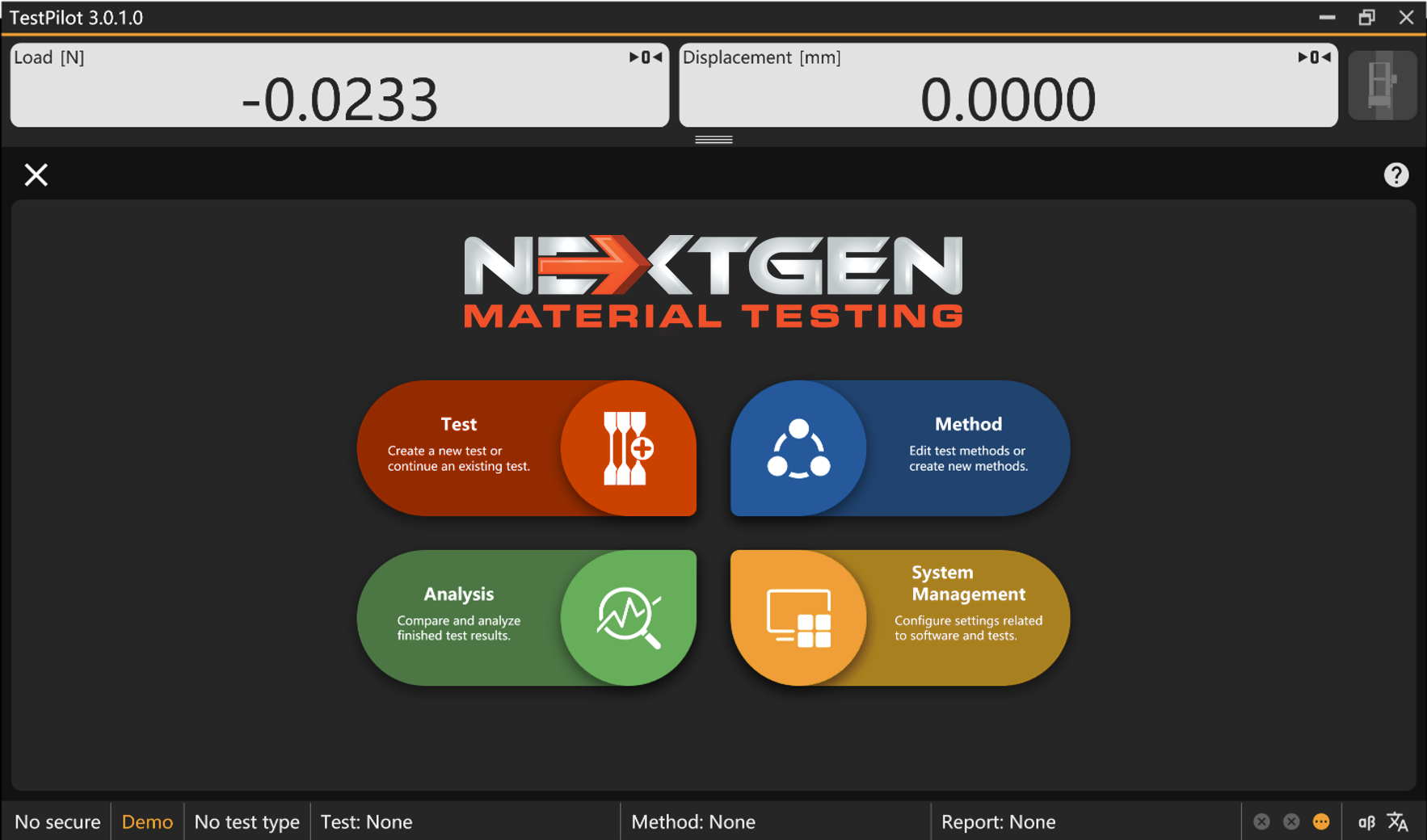
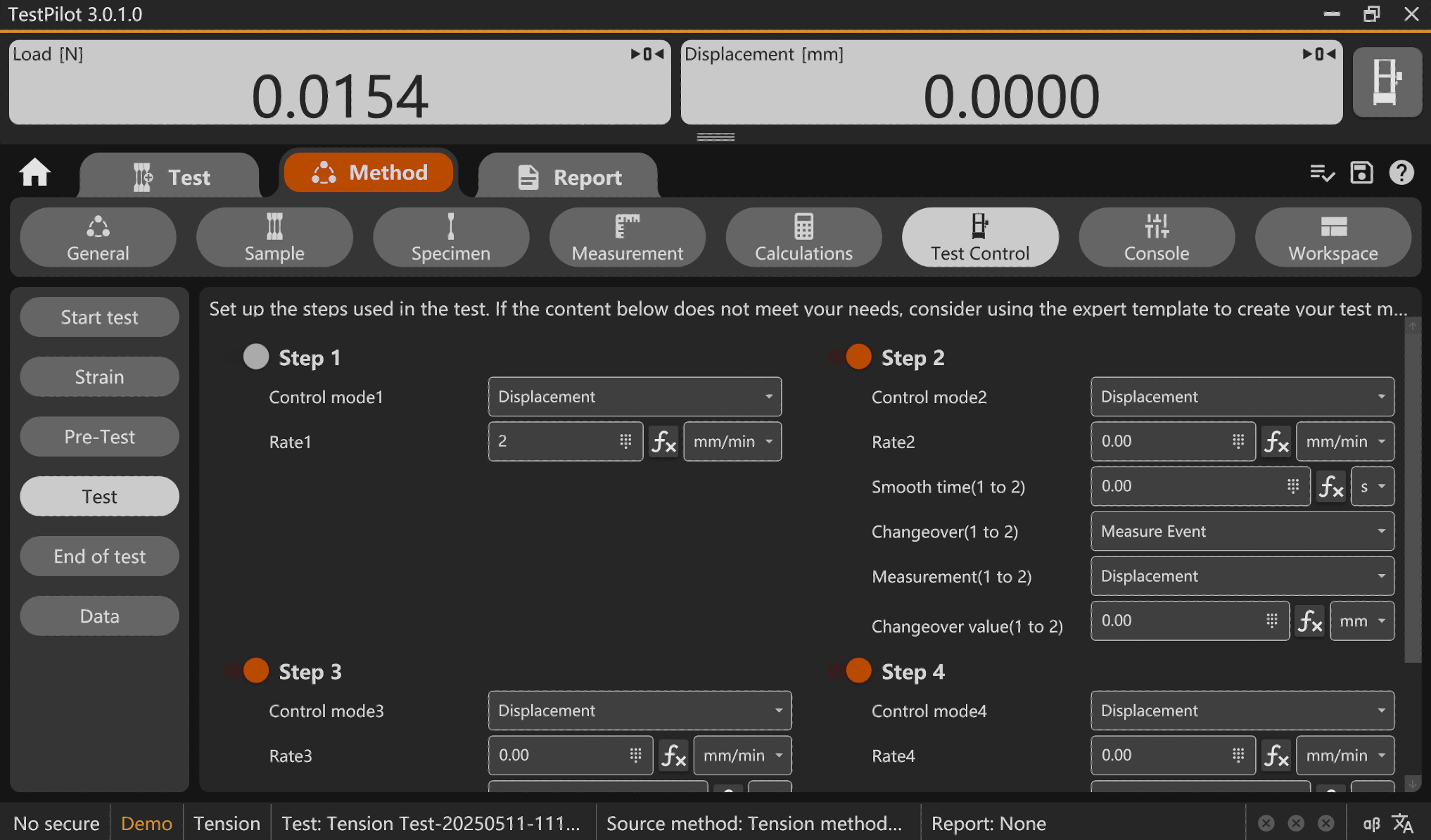
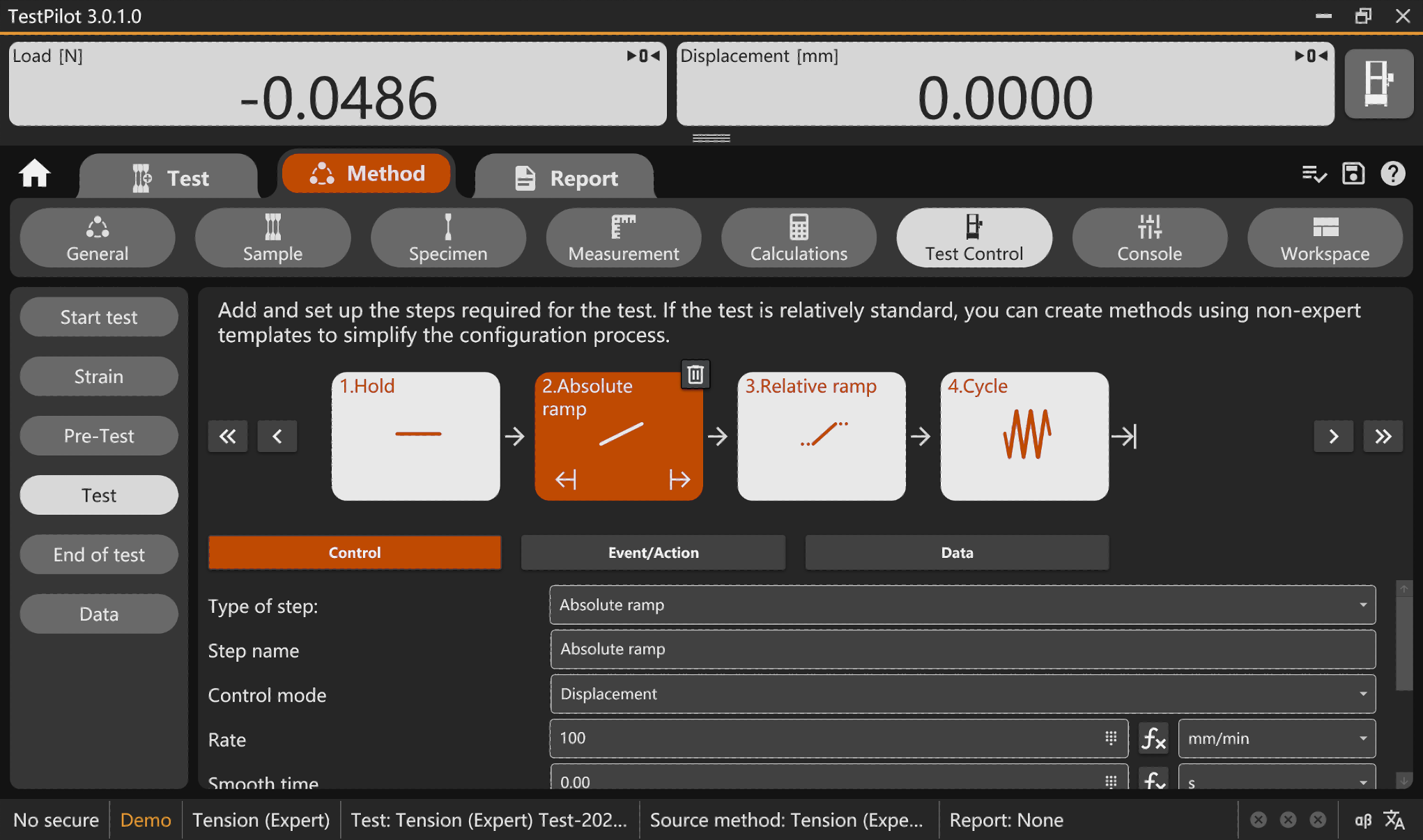
The newly updated testing software features a streamlined and intuitive layout, offering a logical arrangement of functions, consistent interface design, and clearly structured navigation. It supports both horizontal and vertical screen orientations, with automatic resolution scaling based on the display settings of the host computer.
A broad set of preloaded testing protocols is included, covering widely used standards such as GB/T, ASTM, ISO, and EN. These methods are organized into modular test groups based on application type, allowing users to efficiently select appropriate configurations for different industries and materials. In addition to standard methods, the software enables full customization of test procedures and standards to accommodate unique testing scenarios.
An integrated modular accessory management system links accessory configurations directly with the test workflow, allowing seamless interaction between the software and connected components. The platform supports a wide range of external devices, including video extensometers, temperature controllers, analog gauges, fully automatic extensometers, thermal chambers, pneumatic grip controllers, and strain measurement sensors, ensuring maximum adaptability across complex test setups.
- Interface Design: Employs a simplified, flat UI conforming to modern design standards. Optimized font display enhances readability and aesthetic coherence, improving the operator experience significantly.
- Layout and Touch Optimization: Supports both horizontal and vertical display layouts; a numeric keypad is integrated for streamlined touch-based input under operational constraints.
- Demonstration Mode: Enables simulation of tests, allowing familiarization with the software interface without physical specimen interaction.
- Recalculation: Post-test recalculation allows users to modify parameters and reprocess results efficiently.
- Test Standards: Preloaded with built-in test methods compliant with GB/T, ASTM, ISO, and EN standards, organized modularly for streamlined selection.
- Method List: Intuitive display and keyword filtering of test procedures facilitate rapid method identification and selection.
- Quick Test Method: Optimized for tensile and compression tests with minimal configuration steps.
- Data Export: One-click raw data export streamlines post-test processing.
- Test Progress Visualization: Real-time tracking of test steps, cycles, control modes, and duration provides operational transparency.
- Test Graph: Multi-mode interaction with graphs (e.g., touch, keyboard, zoom, and axis panning). Advanced plotting options support complex data visualization needs.
- Function Key Customization: Allows tailored UI controls for specific test methods, maximizing testing efficiency.
- Test Log Recording: Records comprehensive metadata including parameter inputs, system states, and abnormal events for traceability.
- Pre-test Parameter Verification: Enforces parameter validation prior to execution to eliminate procedural errors and reduce waste.
- Sample Protection Mechanism: Prevents premature damage by controlling the clamping sequence and forces.
- Real-Time Data Display: Supports up to 12 configurable channels with customizable layout, units, time formats, and refresh intervals.
- Multifunction Operation Panel: Consolidates manual control functions for connected accessories and core equipment.
- Basic Templates: Pre-configured test method templates support rapid onboarding and expert-level customization.
- Unit System: Includes metric and imperial units; conversion is automatic per selected method or test item.
- Expression Generator: Allows construction of advanced test expressions using logic or variable inputs.
- Measurement Function: Supports multi-channel data collection and live result synthesis.
- Calculation Function: Provides a suite of pre-programmed algorithms for dynamic and static calculations.
- Rounding Function: Permits configurable rounding logic in processed data to ensure result uniformity.
- Test Control: Supports step-based sequencing (ramp, hold, waveform) with customizable trigger events and acquisition strategies.
- Voice Broadcasting Function: Configurable voice prompts guide users through critical testing stages and events.
- Accessory Connection: Broad compatibility with extensometers, chambers, and other peripheral testing hardware.
- Accessory Action Control: Granular control of peripheral device behavior across the test sequence timeline.
- Data Acquisition Strategy: Customizable interval settings prevent data loss during rapid measurement changes.
- Automatic Fixture Pressure Setting: Pressure automatically adjusts based on force thresholds to prevent sample damage.
- Test Report: Full customization of report content and export format, including watermarking and formatting templates.
- Multi-language Switching: Real-time language changes without system reboot enhance international usability.
- Data Analysis: Enables inter-test and inter-batch statistical comparisons for deeper analytical insight.
- Maintenance Reminder: Intelligent system tracking prompts timely servicing to optimize hardware lifespan.
- Permission Configuration Management: Tiered access rights improve operational control and accountability.
- Safety Performance: Covers multi-dimensional safety metrics including electrical, overload, and thermal protections with real-time monitoring.
| Model | NG-EML Dual Column Bench Top – Universal Testing Machine |
|---|---|
| Capacity, kN | 10/5/2/1/0.5/0.2/0.1 |
| Frame type | Desktop |
| Test space | Single space |
| Maximum speed, mm/min | 2000 |
| Minimum speed, mm/min | 0.00005 |
| Maximum return speed, mm/min | 2400 |
| Position resolution, µm | 0.011 |
| Crosshead travel (H), mm | 1090 |
| Test width (W), mm | 420 |
| Dimension (AxBxC), mm | 770×640×1700 |
| Equipped with touch screen (A1), mm | 1250 |
| Frame stiffness, kN/mm | 50 |
| Weight, kg | 270 |
| Power supply | 1kW |
| Voltage | 1-phase AC220V±10%, 50Hz/60Hz |
| Common parameters | |
|---|---|
| Accuracy | Class 0.5 |
| Force range | 500N–10kN 0.2%–100%FS 10N–250N 0.4%–100%FS |
| Calibration standard | GB/T 16825.1, or ISO 7500, class 0.5, ASTM E4 |
| Speed accuracy | ±0.2% of set speed |
| Position accuracy | ±0.2% of set position |
| Force resolution | 1/600000FS |
| Extension resolution | 1/600000FS |
| Strain accuracy | Better than GB/T 228, ISO 6892-1, ASTM E8, ASTM E21 |
| Safety protection | Overload protection (103% of rated force), position limit, over-voltage protection |
| Single channel data sampling frequency | 1200Hz |
| Control frequency | 1200Hz |
| Conditions | |
| Working temperature | +5 ~ +40°C |
| Storage temperature | −25 ~ +55°C |
| Humidity | 20°C, +10% ~ 90%, non-condensing |
| Highest altitude | 2000 meters |
| Motor | AC servo motor |
| Ball screw | Pre-loaded |
| Position measurement | Optical encoder |
Dimensions
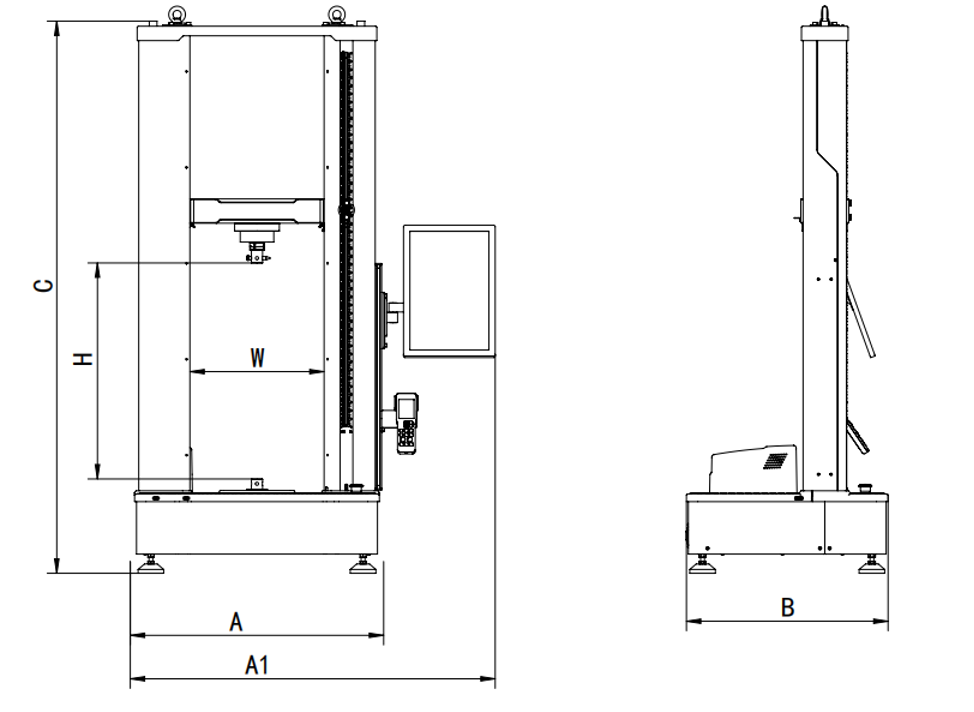
FAQs
The value of a material's ultimate tensile strength does not depend on the size of the test specimen because it is an intense attribute. However, depending on the material, it might also depend on other elements, including how the specimen was prepared, whether or not there were any surface flaws, and how hot the test setting and test material were.
A brittle failure occurs when a material breaks abruptly and without plastic deformation. Others that are more ductile, like the majority of metals, go through some plastic deformation and may neck before they break.
Stress, which is quantified as force per unit area, is the definition of tensile strength. It can be reported as a force or as a force per unit width for some non-homogeneous materials (or for integrated components).
NextGen offer full one-year warranty on parts and labor for Class B – Dual Column Bench Top Units – 1kN-10kN – Universal Tensile Testing Machine
Click here to obtain a personal quote from our team.
The setup and use are described in detail in a test method, which is frequently released by a standards body. This details sample preparation, fixturing, gauge length (the length being studied or observed), analysis, and other procedures.
A gauge length change throughout the test is automatically recorded by an extensometer if necessary, once the specimen is placed in the machine between the grips. The machine itself can record the displacement between its cross heads on which the specimen is held if an extensometer is not installed. However, this method also captures all other stretching or elastic parts of the testing apparatus and its driving systems, including any slipping of the specimen in the grips, in addition to the change in length of the specimen.
Once the machine is running, it starts loading the specimen with gradually increasing force. The control system and its associated software keep track of the load and the expansion or compression of the specimen during the testing.
Here are NextGen’s Class B – Dual Column Bench Top Units – 1kN-10kN – Universal Tensile Testing Machine shipping parameters:
|
Package |
Particleboard pallets and plywood case, or fumigated wood case |
|
Crated Dimension |
37 x 32.3 x 68.50-inches 940 x 820 x 1740 mm |
|
Crated weight |
551lbs / 250kg |
Click here to obtain a personal quote from our team.
Materials' tensile strength and compressive strength are tested using a universal testing machine (UTM), sometimes referred to as a universal tester, materials testing machine, or materials test frame.
There are numerous versions in use. Typical elements consist of:
Usually made composed of two sturdy supports for the machine, a load frame. Some compact machines only have one support.
A force transducer or other device is needed to measure the load in a load cell. Usually, a quality system or regulatory regulations call for periodic calibration.
Crosshead - A crosshead that can move up or down is controlled. This operates typically at a constant speed and is referred to as a CRE machine (constant rate of extension) machine. The crosshead speed can be programmed on some machines, and they can also perform cyclical testing, testing with constant force, testing with constant deformation, etc. There are four types of drive: resonant, linear, and electromechanical.
NextGen offer fully complement test accessories for Class B – Dual Column Bench Top Units – 1kN-10kN – Universal Tensile Testing Machine
Extensive range of accessories to meet test requirements in almost any application or industry: plastics, metals, biomedical, composites, elastomers, components, automotive, aerospace, textiles, and more.
- Tension grip
- Peel/tear fixture
- Compression fixture
- Flexure fixture
- Film COF test fixture
- S type load cells: 10N~5kN
- Long travel extensometer
- Clip-on extensometer
- Environmental chamber
- T-slot table
- Others
Click here to obtain a personal quote from our team.
The EML Class B Series addresses the needs of standardized and routine testing, providing the user high quality at the most affordable price. NextGen’s Class B – Dual Column Bench Top Units – 1kN-10kN – Universal Tensile Testing Machine is a high quality machine with affordable pricing:
- Heavy strength bearings and pre-loaded ball screws ensure extended life, zero backlashes, and linear low force and through zero performance. As a result, measurements are precise and reproducible, accurately reflecting specimen features as opposed to load frame flaws;
- Fully-protected lead screw covers offer longer life and higher operator protection;
- Access to the test area is made easier by easy-to-clean aluminum column covers with chamfered corners;
- High-speed, low vibration, top-of-the-line, maintenance-free AC servo motor and servo controller;
- Photoelectrical encoder built-in servo motor system;
- Built-in bidirectional load cell is assembled in the middle crosshead to prevent any collisions;
- Built-in T-slots are built in for simple, convenient attachment and positioning of testing accessories;
- All frames have dual action overtravel limitations, which offer the highest level of security and adhere to all international regulations;
- Test operation is made easier with the remote control keypad;
- The NG-400 controller provides high-speed data gathering with 8-CH A/D conversion;
- complete parts and labour warranty for a year;
- The upgraded software is free.
Click here to obtain a personal quote from our team.
The EML Class B Series provides the customer with high quality at the most competitive price to meet the needs of standardized and routine testing. The two-column Class B testing systems are appropriate for testing applications requiring load ranges between 10N and 10kN, including tension, compression, flexure, and other tests. The plastics and rubber sectors are primarily used for quality control and production testing.
NextGen’s Class B – Dual Column Bench Top Units – 1kN-10kN – Universal Tensile Testing Machine uses USB 2.0 communication.
Utilizing a USB 2.0 interface and moving data at a 12Mb/s speed, hardware and software exchange data. The main communication development path is toward USB, which will eventually replace other communication methods because of its high communication speed and variety of communication modes (including controlling, breaking, batch, real-time, etc.).
Click here to obtain a personal quote from our team.
Due to their superior short - and long-term mechanical and chemical properties, polypropylene (PP) and its composites are the preferred materials for many applications. Additionally, PP has the lowest density of any thermoplastic, making it popular and appealing in a variety of circumstances.
The mechanical properties of the materials are determined using stress-strain diagrams. The greatest value in the stress-strain relationship is the yield stress, and the modulus of elasticity is represented by the slope of the relation's initial linear section.
After an initial liner viscus (elastic) reaction, the tensile strength achieves its highest value before falling to a lower value that nearly remains constant (particularly at a cross-head speed of 20 and 50 mm/min) until a complete fracture occurs.
NextGen’s Class B – Dual Column Bench Top Units – 1kN-10kN – Universal Tensile Testing Machine crosshead travel is 39.4" / 100cm (Can be extended to 130cm).
Click here to obtain a personal quote from our team.
In restorative clinical practice, direct resin composite is the restorative material that is most frequently used. The material is used by clinicians as anterior and posterior restorative materials because of its mechanical properties, which are constantly changing. Evaluation of the material properties, such as compressive strength, diametral tensile strength (DTS), and flexural strength, serve as a bridge between fundamental material sciences and clinical applications due to the ongoing evolution of resin composite materials.
Testing for the diametral tensile strength of brittle materials with little to no plastic deformation was created for this purpose. In this test, a compressive stress is applied to a cylindrical specimen in the diametral plane, which is orthogonal to the longitudinal axis. A universal testing device is used to evaluate the strength properties, and its typical crosshead speed is 0.5 mm/min.
NextGen’s Class B – Dual Column Bench Top Units – 1kN-10kN – Universal Tensile Testing Machine crosshead speed accuracy is within ±1.0% / ±0.5% of set speed.
Click here to obtain a personal quote from our team.
The tensile test is one of the most significant tensile tests, and due to its widespread use and acceptance as the most effective test method for determining the mechanical properties of primarily metallic materials, it is also one of the most important tensile tests. Additionally, it has the advantage of being able to fracture any substance while still adhering to the law of mathematical similarity.
The length of the testing rod is tracked and recorded by a tensile sensor that is directly attached to it. The slant of this portion of the tension chart includes both the elastic behaviour of the testing bar and the bending stresses of ripping machine elements—machine frame, dynamometer, and jaws—if the expansion of the test section is acquired from the motion of the tearing machine's cross member.
The linearity is lost, and there is a departure from the initial linear trend due to the commencement of plastic deformation accumulation, even though the distortion is constant over the section between points U and P. When the defined dependency peaks, the stress is at its highest location in the figure. It develops with increasing distortion.
NextGen’s Class B – Dual Column Bench Top Units – 1kN-10kN – Universal Tensile Testing Machine crosshead speed is 0.001 - 500mm/min.
Click here to obtain a personal quote from our team.
Finding out a material's mechanical characteristics, yield strength, and flexibility by tensile testing is damaging. It determines the amount of force required to break a hybrid or plastic specimen as well as the length or elongation the specimen must undergo to reach that breaking point.
The most typical test for fundamental composite laminates is in-plane tensile testing. Tensile tests are performed on resin-impregnated fibre bundles (also known as "tows"), through-thickness samples (samples taken from thick lamination parts), and sandwich core material portions. Because polymers are anisotropic and frequently brittle, alignment is essential for composite testing applications. Anisotropy refers to how a material's characteristics and tensile strength vary depending on how a load or stress is applied. As a result, the tensile strength of a composite material is significantly reduced when tested in any direction other than the direction parallel to the fibre orientation. Unexpectedly, the tensile test requires superior axial-load-string alignment to determine the maximum tensile strength in the direction parallel to the fibre direction, which is crucial for the aerospace sector.
NextGen’s Class B – Dual Column Bench Top Units – 1kN-10kN – Universal Tensile Testing Machine position resolution is 0.027μm.
Click here to obtain a personal quote from our team.
The amount of force applied to the sample is measured by load cells. These also come in various capacities, just like frames. The load cell will break before the sample if the capacity of the chosen load cell is less than the specified breaking strength. A load cell's resolution normally drops to 1%. Thus if it has a capacity that is too large, the test results may not be as precise as intended. For instance, a sample that breaks with less than 1 lb of force would be too heavy for a 1,000 lb load cell.
Depending on how your system is configured, you might require a controller or an indicator. The test frame's behaviour during testing, including the test speed and displacement, is controlled by controllers, as the name suggests. An indicator may be all that is needed in certain circumstances. While capturing and displaying test data, indicators do not operate the equipment.
For tension testing, a variety of grips and fittings are available. To hold different materials securely, different fixturing are needed. For instance, because of how the materials respond to tensile stresses, a sample composed of metal demands a different grip than a stretchy piece of rubber. For reliable results, choosing the right grips for your application is essential.
NextGen’s Class B – Dual Column Bench Top Units – 1kN-10kN – Universal Tensile Testing Machine position accuracy: ±0.50% of reading.
Click here to obtain a personal quote from our team.
The frame of the universal test machine offers the support and rigidity required to tear apart the sample at the specified rate. A wide range of capacities is offered for frames in electromechanical and servo-hydraulic designs. Choosing a frame that can bear the force required to test the sample is crucial.
The offset approach estimates yield for materials where the initial linear region does not have a distinct termination. The offset method overlays a line with a slope equal to the beginning slope of the stress-strain curve over the material's stress-strain curve. The line is usually 0.2% off-centre along the strain axis (it crosses the strain axis at = 0.002). The place where this line and the stress-strain curve connect is known as the offset yield point.
In general, the following tools are required to perform tension testing:
- Frame for a universal test device
- Load cell
- Indicator or controller
- Right grips utilization and fixturing to hold your sample.
Click here to obtain a personal quote from our team.
The amount of force per unit of cross-sectional area is known as stress. When expressed as a percentage, strain is the ratio of the new length to the old length. Plots of stress vs. strain are used in tensile testing to depict the results.
The area of the stress-strain curve known as elastic deformation is where deformation can be undone by decreasing stress. Additionally, it is the area where stress and strain are most closely matched. On a stress-strain curve, it is the first linear segment that can be seen.
The point on the stress-strain curve where the plot first starts to veer away from Young's modulus line. Depending on the subject matter, this departure is frequently gradual.
The utmost amount of stress a material can endure before failing is known as the ultimate tensile strength. This represents the stress-strain curve's highest value.
NextGen’s Class B – Dual Column Bench Top Units – 1kN-10kN – Universal Tensile Testing Machine force resolution is 1/500,000FS.
Click here to obtain a personal quote from our team.
When choosing acceptable materials for research and development, tensile testing is crucial. Additionally, tensile testing can be used to confirm that materials meet minimum strength and elongation standards.
Conducting precise and dependable tensile testing is an important need since lives could depend on the quality of your materials and products, from safety harnesses to suspension bridge cables.
Materials' behaviour under tension loads is predicted via tensile tests. A sample is typically tugged until it breaks in a straightforward tensile test to ascertain the material's maximum tensile strength. Throughout the test, the sample's elongation (L) and the amount of force (F) applied to it are assessed. The terms stress (force per unit area) and strain (percent change in length) are frequently used to describe the properties of materials. Stress is calculated by dividing the force readings by the sample's cross-sectional area (σ = F/A). By dividing the length change by the sample's original length, strain measurements are obtained (ε = ∆L/L). A stress-strain curve, an XY plot of these parameters, is then displayed.
NextGen’s Class B – Dual Column Bench Top Units – 1kN-10kN – Universal Tensile Testing Machine force accuracy is ±1.0% / ±0.5% of reading.
Click here to obtain a personal quote from our team.
Manufacturers can thoroughly picture a product's tensile qualities by measuring it in tension. This data produces a stress/strain curve shown on a graph, illustrating how the material responded to the applied forces. Although different standards call for measuring various mechanical properties, the most important ones are typically the point of failure, elastic modulus, yield strength, and strain.
The ultimate tensile strength of a material is one of the most crucial characteristics we can determine about it (UTS). This is the greatest amount of stress that the test subject can withstand. Depending on whether the material is brittle, ductile, or has characteristics of both, the UTS may or may not be equivalent to the specimen's strength at break. When a material is evaluated in the lab, it may be ductile. Still, when used in service and exposed to extremely cold temperatures, it may change behaviour and become brittle.
NextGen’s Class B – Dual Column Bench Top Units – 1kN-10kN – Universal Tensile Testing Machine force range is: 0.2% - 100%FS / 0.4 - 100%FS.
Click here to obtain a personal quote from our team.
The majority of tensile tests are conducted in accordance with recognized standards that are available from organizations like ASTM and ISO. For several types of raw materials, including metals, polymers, elastomers, textiles, and composites, as well as for completed goods, including medical devices, automotive components, and consumer electronics, testing standards specify acceptable test parameters and findings. These criteria guarantee that goods entering the supply chain have predictable mechanical characteristics and are unlikely to malfunction when put to use as intended. Companies are encouraged to invest in high-quality, precise testing equipment designed to assist them in quickly assessing whether or not their products meet applicable requirements because of the financial and safety implications of product failure, which cannot be understated.
To achieve reliable test results, it is crucial to have a solid understanding of crosshead compliance and strain control. Test control methods are a key factor in metals testing.
NextGen’s Class B – Dual Column Bench Top Units – 1kN-10kN – Universal Tensile Testing Machine load frame configuration is Dual column, Table-top (integrated), Electromechanical.
Click here to obtain a personal quote from our team.
The simplest and most typical kinds of mechanical testing are carried out by a tensile testing machine. In a tensile test, a material is pulled with tensile force to determine how the specimen reacts to the stress. Tensile tests establish a material's strength and elongation limit in this way. Tensile tests are commonly performed using electromechanical or universal testing equipment, are straightforward to carry out, and are completely standardized.
Tensile testing equipment, often called universal testing equipment, is used to conduct tensile tests. A test frame with a load cell, testing software, application-specific grips and accessories, and extensometers make up a tensile testing machine. A single machine can be modified to test any material within its force range by simply modifying the fixturing, depending on the type of material being tested.
The typical specimen are: Small components, reinforced plastics, soft metals, wire, composites, elastomers, wood products, textiles, biomaterials, paper products, adhesives, foam, consumer products.
Click here to obtain a personal quote from our team.
The two column Class B testing systems are appropriate for testing applications requiring load ranges between 10N and 10kN, including as tension, compression, flexure, and other tests.
NextGen’s Class B – Dual Column Bench Top Units – 1kN-10kN – Universal Tensile Testing Machine features:
- Full range of robust, small dual column load frames;
- Precision, pre-loaded ball screws;
- High-speed, low-vibration electromechanical drive;
- Guides for linear motion for better alignment;
- A flexible, user-friendly program with a pre-programmed library of industrial standards (including ASTM, ISO, DIN, EN, BS, and others);
- Closed loop controllers with high resolution integrated into the load frame;
- Crosshead position, overload, over-temperature, over-voltage, and other automatic limit checks;
- Extensometers, environmental systems, and a full range of grips and fittings;
- Dependable test space security.
Click here to obtain a personal quote from our team.
The EML class B Series responds to the demands of routine and standardized testing, offering the user outstanding quality at the most competitive price. NextGen’s Class B – Dual Column Bench Top Units – 1kN-10kN – Universal Tensile Testing Machine has the following software:
- Multi-language software with built in English, Chinese and Russian, and user can customize their own translation freely
- Pre-packaged test methods to help you quickly and efficiently meet the requirements of global test standards such as ASTM, ISO, DIN, EN, BS, and more
- Intuitive expression for easy programming of testing standards and testing process
- Testing report can be customized according to the requirement
- User authorization: The administrator can assign different functions for different level users
- Analysis can give typical test results like Young’s modulus, Proof stress, Yield stress, stress, strain, Tensile strength, Elongation at break, compressive strength, bending strength, etc….
Click here to obtain a personal quote from our team.
Flexible cellular materials' indentation hardness is a gauge of how well they can support loads. This International Standard outlines four methods (A to D) for determining the indentation hardness of flexible cellular materials and one method (E) for determining the compressive deflection coefficient and hysteresis loss rate.
Only these five techniques are used for latex foam, urethane foam, and PVC foam of the open-cell variety. The procedures listed can be used for bulk material characterization as well as testing of completed products. The techniques listed below are detailed in this International Standard:
- Method A - Determining the 40%/30 s indentation hardness index, which provides a single indentation measurement for laboratory test purposes;
- Method B - Determining the 25%-40%-65%/30 s indentation hardness characteristics, which provides details about the shape of the hardness indentation curve;
- Method D - Determining the 40% indentation hardness check, which is a quick procedure suitable for quality control testing;
- Method D, which is a quick procedure appropriate for an inspection test and determines the 25%/20 s low indentation hardness index;
- Method E, which determines the compressive deflection coefficient and hysteresis loss rate and provides additional details about the load-bearing capabilities of materials.
NextGen’s Class B – Dual Column Bench Top Units – 1kN-10kN – Universal Tensile Testing Machine complies with ISO 2439 standard.
Click here to obtain a personal quote from our team.
The force-proving device may be fastened to the testing machine with threaded studs to calibrate tension and compression modes on testing systems without compression platens. In this instance, the force-proving instrument must have been calibrated similarly (i.e., with threaded studs), and rotation over an angle of 120° is necessary between each series of readings while the testing machine is being calibrated. One calibration could be carried out if the machine has two work areas with a common force application and signalling device, for example, to make compression in the upper work area equal to the tension in the lower work area and vice versa. A pertinent note should be included on the certificate.
The calibration must be performed between 10 and 35 °C of ambient temperature. The verification report must include a remark about the temperature used for the calibration.
NextGen’s Class B – Dual Column Bench Top Units – 1kN-10kN – Universal Tensile Testing Machine complies with ISO 7500 standard.
Click here to obtain a personal quote from our team.
Related Products
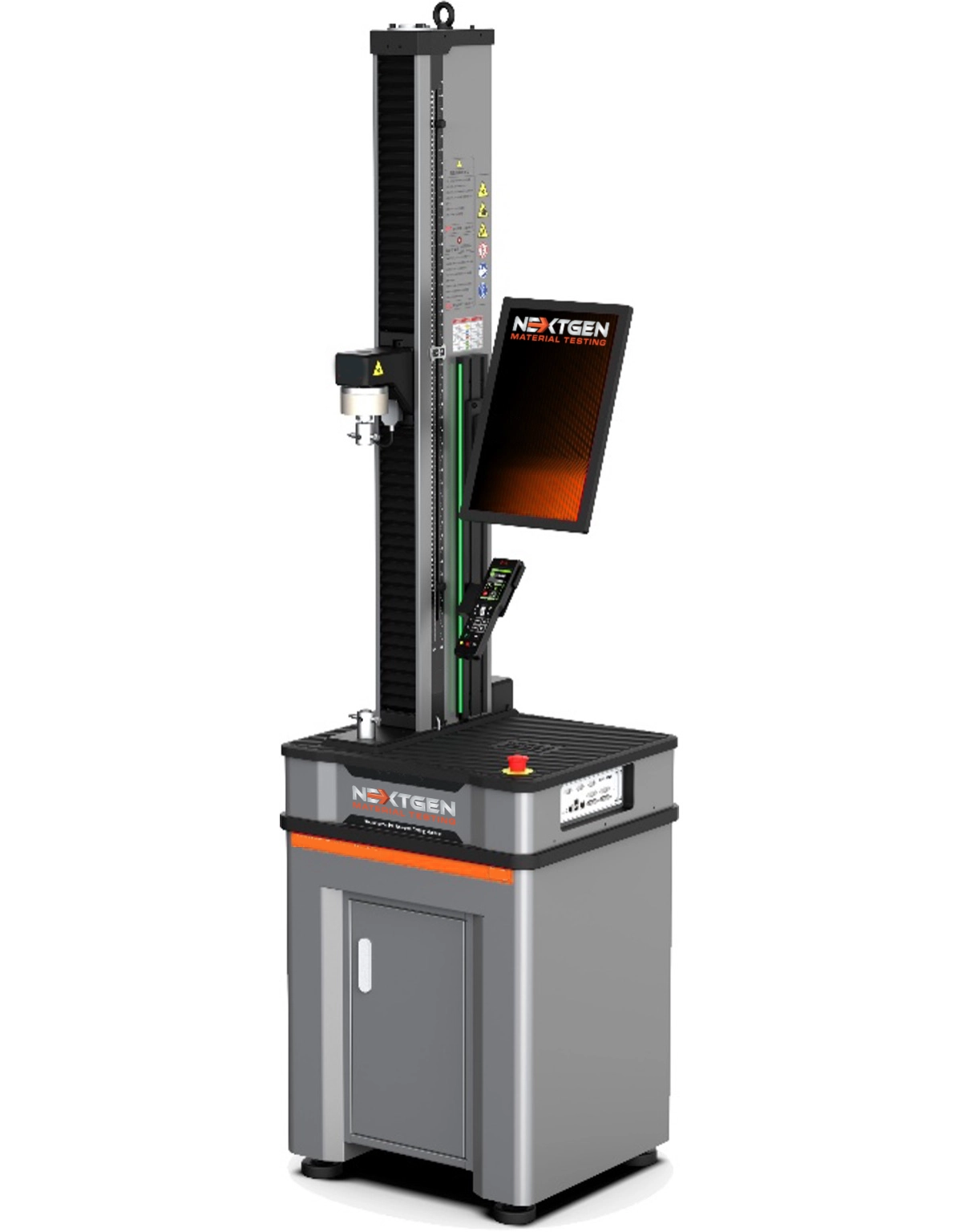
NG-EML Single Column Bench Top - Universal Testing Machine (50N-5kN)
The single column Class A testing systems are suited for tension, compression, flexure and other testing applications where specimens require less than 5 kN (1124.04 lbf) and where lab space is limited. The system is equipped with 1/500,000 Force Resolution the system is capable to providing +/-1% down to 0.2N.
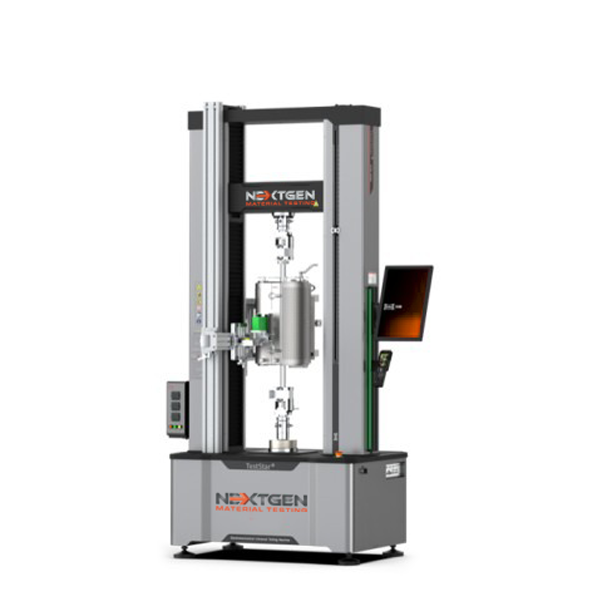
NG-EML - Dual Column Bench Top and Floor Standing - Universal Testing Machine (20kN-50kN)
The dual column Class C testing systems are suited for tension, compression, flexure and other testing applications where load range requirements are between 20kN to 50kN (4496.17 - 11240.44 lbf). The advanced load cell system offers ±0.5% accuracy down to 0.4% of capacity.
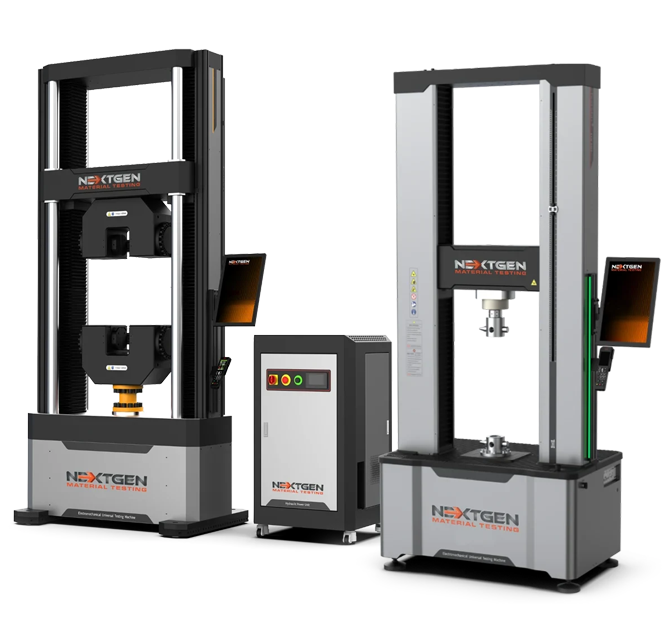
NG-EML Floor Standing - Universal Testing Machine (50kN-600kN)
The NG-EML Floor Standing - Universal Testing (Machine 50kN-600kN) are suited for tension, compression, flexure and other testing applications where load range requirements are between 50kN to 600kN (11240.44 - 134885.36 lbf). This heavy duty system offers ±0.5% reading accuracy as well as position accuracy down to 0.021μm.

GenTest Data Acquisition Software - Advanced Universal Testing Machine Software
Upgrade to GenTest, the latest data acquisition software for universal testing machines. Ensure precise, repeatable material testing with an intuitive interface, powerful analysis tools, and full compliance with ASTM, ISO, DIN, and more.

